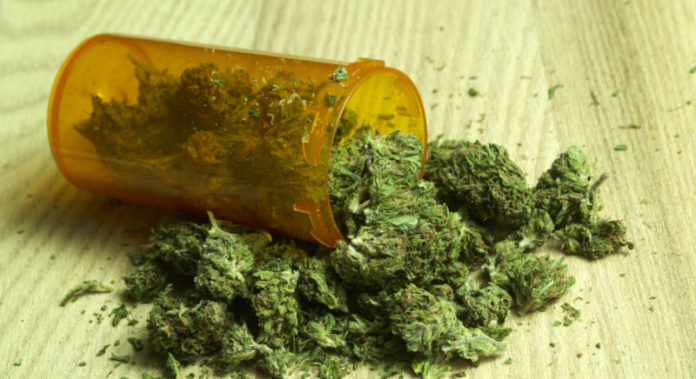
As medical marijuana becomes increasingly accepted, there is growing interest in its use for children and adolescents with developmental and behavioral problems such as autism spectrum disorders (ASD) and attention-deficit/hyperactivity disorder (ADHD), according to a review in the February Journal of Developmental & Behavioral Pediatrics, the official journal of the Society for Developmental and Behavioral Pediatrics.
That’s despite a lack of studies showing any clinical benefit of cannabis for young patients with these disorders — whereas evidence strongly suggests harmful effects of regular marijuana use in the developing brain. Scott Hadland, MD, MPH, John R. Knight, MD, and Sion Kim Harris, PhD of Boston Children’s Hospital write, “Given the current scarcity of data, cannabis cannot be safely recommended for the treatment of developmental or behavioral disorders at this time.”
“Children with severe ASD cannot communicate verbally and may relate to the world through loud, repetitive shrieking and hand-flapping that is very disruptive to their families and all those around them,” comments Dr Knight, the study’s senior author. “So my heart goes out to families who are searching for something, anything to help their child,” he continues. “But in using medicinal marijuana they may be trading away their child’s future for short-term symptom control.”
Known Harmful Effects of Marijuana in Children and Teens…
The review was prompted by rapid changes in US marijuana policy, with marijuana being permitted for medical use in many jurisdictions and legalized in others. “Amidst this political change, patients and families are increasingly asking whether cannabis and its derivatives may have therapeutic utility for a number of conditions, including developmental and behavioral disorders in children and adolescents,” according to Dr Knight and colleagues.
They review the important pharmacological properties of cannabis and related compounds, along with data on marijuana use in the population. Adolescents with developmental and behavioral disorders — especially ADHD — may be predisposed to early and heavier substance use. Meanwhile, a growing body of evidence links cannabis to “long-term and potentially irreversible physical, neurocognitive, psychiatric, and psychosocial adverse outcomes.”
Over time, regular cannabis use by adolescents has been linked to persistent declines in intelligence quotient and increased risk of addiction, major depression, anxiety disorders, and psychotic thinking. The adolescent brain may be uniquely susceptible to the harmful effects of marijuana, reflecting the role of the cannabinoid receptors in normal neurodevelopment. Brain abnormalities in adults who are heavy marijuana users may have their origin in neurodevelopmental changes starting in adolescence.
…With Little Data on Benefits in Developmental or Behavioral Disorders
While cannabis has been proposed to have a broad range of clinical benefits in adults, “At this time, good evidence is almost entirely lacking for its application in pediatric developmental and behavioral conditions,” Dr Knight and coauthors write.
“The scant research that we have on adolescent use is alarming enough,” says Leonard Rappaport MD, MS, Chief of the Division of Developmental Medicine at Boston Children’s Hospital and past president of the Society for Developmental and Behavioral Pediatrics. “But we are really moving into entirely new territory when we consider giving cannabis to children as that has not even been done in neurotypical children, let alone those with developmental or behavioral problems.”
And yet, a number of online groups are advocating the use of “medical marijuana” for children with autism, ADHD, and other developmental and behavioral conditions. These groups often cite evidence from animal research, or from a small number of clinical reports, to claim beneficial effects of cannabis in children. Those beneficial effects are likely from cannabidiols, which also benefit children with uncommon forms of epilepsy and have limited euphoric effects; rather than tetrahydrocannabinol (THC), with its strong euphoric and neurotoxic effects.
This movement, coupled with the increased willingness of physicians to prescribe cannabis, “may result in issuing of medical marijuana permits for developmental or behavioral diagnoses for which no data on efficacy, safety, or tolerability exist,” the researchers write. They note that if and when studies of cannabis for developmental and behavioral conditions are performed, they will likely use extracts formulations of known dosage — rather than plant forms of medical marijuana, which vary widely in strength and effects. Dr Knight adds, “We need more research on cannabidiols, and development of products that are high in cannabidiols and low in THC.”
Dr Knight and coauthors hope their article will draw attention to the potential harmful effects of marijuana in young people — as well as lack of evidence on its effects in those with developmental or behavioral disorders. They conclude, “As marijuana policy evolves and as the drug becomes more readily available, it is important that practicing clinicians recognize the long-term health and neuropsychiatric consequences of regular use.”
Story Source:
The above story is based on materials provided by Wolters Kluwer Health: Lippincott Williams and Wilkins. Note: Materials may be edited for content and length.
Journal Reference:
- Scott E. Hadland, John R. Knight, Sion K. Harris. Medical Marijuana. Journal of Developmental & Behavioral Pediatrics, 2015; 36 (2): 115 DOI: 10.1097/DBP.0000000000000129
